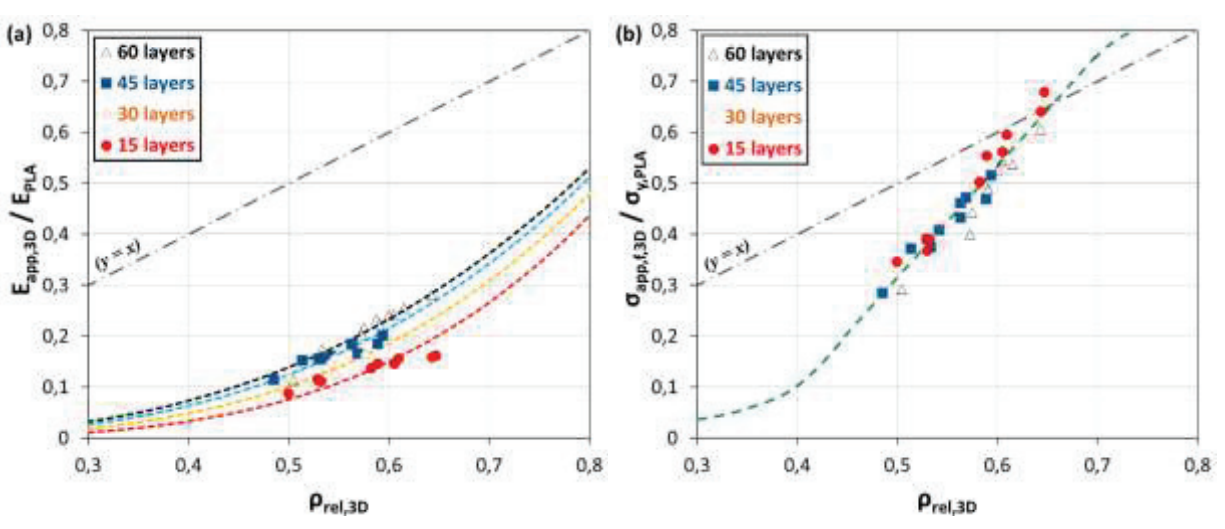Italian authors Claudia Pagano, Lara Rebaioli, Francesco Baldi, and Irene Fassi explore the unique details of creating scaffold-like structures in the recently published ‘Mechanical behavior of scaffold-like structures: Research of relationships between properties and geometry.’ In this study, the focus is on scaffold geometry and stability, and how mechanical properties are affected.
Scaffolds today are used in a wide range of tissue regeneration and engineering applications, serving as porous structures based on networks promoting the growth of human tissue. The researchers realized for this study that it was critical to confirm the relationship between stiffness and strength and the size of samples in ‘polymeric parts’ structured like scaffolds. PLA ‘scaffold-like samples’ were printed and tested for tensile strength, slicing the 3D models in Simplify3D using a Sharebot NG 3D printer. Samples were printed to include ten replicates for each height of 6, 12, 18, and 24mm.
Each of the specimens was evaluated regarding density, porosity, and mass.
Loading curves for each specimen demonstrated:
- First region (R1) – load increases linearly
- Second region (R2) – characterized by abrupt reduction of slope
- Third region (R3) – just beyond the knee
“By analogy with the behavior of cellular materials, and by considering the compression direction and the specific 3D structure, it is likely that: in the linear elastic region R1, the load is mostly borne by the material in the filament junctions of the adjacent layers; at the knee (R2), the plastic collapse of the structure occurs, based on localized yielding phenomena of the constituent polymer; in R3, the porous structure undergoes a progressive accumulation of plastic deformation and the filaments crash together, resulting in an evident distortion of the specimen.”
The authors also note that because of the polymer strength offering more influence, ‘with respect to stiffness,’ that element should be taken into account when selecting material to build a structure; in fact—and of course this makes sense in any construction project—a comprehensive knowledge is critical to the success of any design and consequent structure that is created later.
“In case the mechanical behavior of a typical scaffold structure could be described by referring to properties intrinsic to the system (independent on the geometry/size) the structure could be treated as an effective ‘3D material,’ and the scaffold design could be easily produced and its performance predicted,” concluded the researchers.
“Several parallelepiped-shaped specimens with different sizes have been fabricated and their mechanical stiffness and strength measured by compression tests. The results have showed that the porosity degree controls the stiffness and strength of the 3D structure. Only the strength, taken as the stress at failure, is intrinsic to the examined structure (thus behaving as a ‘3D material’ concerning the mechanical strength), whereas for the stiffness, a specimen size dependence has been observed. The polymer properties have a stronger influence on the 3D structure strength rather than on its elastic response.”
The successful fabrication of scaffolds is becoming more important to research today—and to patient-specific treatment in areas such as bone replacement, mesh reinforcements, and classic tissue engineering.
What do you think of this news? Let us know your thoughts! Join the discussion of this and other 3D printing topics at 3DPrintBoard.com.
[Source / Images: ‘Mechanical behavior of scaffold-like structures: Research of relationships between properties and geometry’]Subscribe to Our Email Newsletter
Stay up-to-date on all the latest news from the 3D printing industry and receive information and offers from third party vendors.
You May Also Like
IperionX Inks 10-Year Deal with Wisconsin Manufacturer for 80 Metric Tons of Titanium Per Year
IperionX, the Charlotte-based supplier of sustainable titanium powders used for additive manufacturing (AM) and metal injection molding (MIM), has signed a ten-year deal with United Stars, a group of industrial...
Gastronology Launches Industrial Production of 3D Printed Food for Dysphagia Patients
Food 3D printing has, in many ways, been an additive manufacturing (AM) segment looking for the right business case. While some applications are beautiful and others may or may not...
Lockheed Martin Leads $3M Investment in Q5D’s Electronics 3D Printing System
Q5D, an original equipment manufacturer (OEM) of robotic arm, hybrid additive manufacturing (AM) systems used for wire harness production, has closed a $3 million investment round. The investment arm of...
3D Printing News Briefs, April 6, 2024: Depowdering, Cybertruck Door Handles, & More
In today’s 3D Printing News Briefs, ioTech’s digital manufacturing CLAD technology is opening up opportunities for microelectronics and additive manufacturing. Hexagon and Raytheon Technologies commercially released the Simufact Additive Process...


































